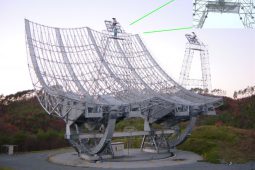PPARCセミナー (2022/11/25)

“
PPARCセミナー 2022/11/25
発表者: Hiroyasu Kondo (M1)
タイトル: Development of new multi-wavelength all-sky imagers for observation of polar cap aurora
アブスト: We are developing a camera system to observe the polar cap aurora as a part of the phase X Priority Research program of the NIPR. The period of phase-X (FY2022-2027) involves the solar maximum, and we expect to obtain sufficient data at high-latitude Antarctic region. The main purpose of this program is to understand how the Earth’s environment is an open system to space. There have been few observations in the polar cap region because of limited observational places, and only a limited number of large space weather events such as solar proton events (SEP) have been reported. The polar cap region is particularly important since the direct interaction between the solar wind and atmosphere happened in by precipitating electrons and ions in a wide energy range from hundreds eV (typical solar wind) to MeV (SEP). SEP would cause ionization in the middle atmosphere and possibly induce chemical processes including O3, HOx, and NOx, and may change temperature structure.
To estimate the energy of precipitating particles, it is essential to observe auroras at multiple wavelengths. Our auroral camera systems will be installed in automated stations over Antarctic polar region during the phase X, and there are a lot of variety of development items such as isolated long-term monitoring system, power-saving multi-wavelength cameras, power, insulation box, etc.
To check the functions of our camera system, this year we plan to install four all-sky monochromatic imagers in the Syowa station as a part of the JARE 64, and also install two camera system at Longyearbyen, Svalbard. The wavelengths of the Syowa station system are N2+ 391.4 nm, O 557.7 nm, O 630.0 nm, N2 670.0 nm. The exposure time for the cameras of 391.4 nm and 630.0 nm is 18 sec with a cadence of 20 sec, and that for the cameras of 557.7 nm, 670.0 nm is sampled with up to ~10 Hz. The wavelengths of the Longyearbyen system are N2+ 391.4 nm and O 630.0 nm, and the exposure is 18 sec with a cadence of 20 sec.
発表者: Hiroaki Misawa (Staff)
タイトル: Causalities of occurrence features of Io-related Jupiter’s radio emission : Examination of non-uniform energy supply from Io
アブスト: The following question; ‘How Jupiter’s auroral radio emissions are generated?’ has been long years of subjects. Especially the Io-related auroral emission component (Io-DAM) has shown mysterious nature of characteristic occurrence probability, that is, the occurrence strongly depends on both Io’s positional angle and Jupiter’s magnetic longitude to an observer. We have investigated this subject based on ray-tracing analyses using several kinds of magnetic field and plasma density models including a new JUNO based magnetic field model ‘JRM09’. The analyses show that JRM09 gives more natural explanations for the observed occurrence probabilities, however a hypothesis of some special energy transportation to the Io-DAM source region is needed to restrict radio emissions to be solely Io-DAM emissions. We have examined whether this hypothesis is really needed based on the analyses of observation results for Io footprint aurora (IFA) brightness on the assumption that auroral brightness reflects intensity of Io-DAM emission. As the result, IFA brightness at non-Io-DAM source longitudes is rather larger than those at Io-DAM source longitude, which implies the hypothesis can be ruled out and demands the some other ideas to explain the Io-DAM occurrence nature. In this seminar we would like to discuss with you what this result means.
“





